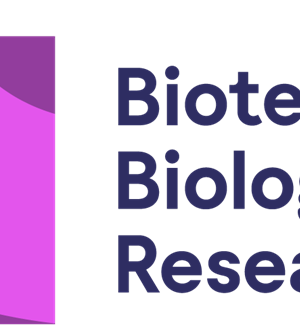Plastic pollution is a growing worldwide problem, with 12,000 million metric tonnes of plastic waste predicted to be in landfill or the environment by 2050. Whilst recycling can give a second life to some plastic, not all plastic types are easily recycled and cost can be a limiting factor, resulting in only 9% of plastic waste having ever been recycled. If plastic is not recycled, it is either sent to landfill where it pollutes the soil and run off pollutes the global water systems, or it is incinerated, releasing toxic fumes and adding to carbon emissions. Plastic pollution is damaging the environments of animals all the way down to microbes, ultimately leading to ecosystem collapse. An environmentally friendly alternative is biodegradation of plastic by microorganisms into non-toxic breakdown products, some of which can be valorised with downstream industrial uses, such as polyethylene glycol, which has many uses including acting as an anti-foaming agent in food and drinks. Multiple species of bacteria have been found to degrade waste plastic, however many of these act at a slow rate resulting in only a small reduction in plastic weight over a period of months. An example of this is an environmental consortia of plastic degrading microorganisms which was able to decrease polystyrene weight by ~5% in 6 months. Recent research has focused on identifying the enzymes produced by these bacteria and fungi that are capable of breaking down waste plastic and exploring if these enzymes can be modified to increase their ability to degrade waste plastic. While these approaches have yielded some improvements, these enzymes are still a long way off being a viable solution to tackling the plastic waste problem. The majority of research in the field is currently focused on optimising the plastic eating enzymes themselves to improve their activity. In this proposal we aim to take a novel approach, exploring the frontiers of activity optimisation by modifying how bacteria behave, to increase their ability to degrade plastic. Bacteria like to attach to surfaces in communities called biofilms because, just like people who live villages, towns or cities, bacteria in biofilms are better protected from the environment and can share resources and nutrients with each other. To build a biofilm, bacteria produce a slime called an exopolysaccharide which surrounds the community. A good example of a bacterial biofilm that everyone has encountered at some point is dental plaque. This is a community of bacteria who like to grow in the mouth, so attach to our teeth and form a biofilm to help them stay in this environment. In this proposal we plan to harness this behaviour of bacteria using genetic engineering to trick plastic degrading bacteria into forming large biofilms on the surface of waste plastic. Forming a biofilm on waste plastic has two major advantages. The first advantage is that it increases the concentration of plastic degrading enzyme around the waste plastic and the more enzyme means the more degradation. The other major advantage is that the exopolysaccharide slime being produced by the bacteria will stop the enzymes from being washed away. We have performed some preliminary tests in the lab to show that using genetic engineering we can increase the levels of bacteria biofilm formation on waste plastic. We have also tested our approach using well-known plastic eating enzymes and shown that increasing the levels of biofilm formation leads to a major increase in the levels of plastic degradation. In a high risk, high reward strategy we now want to test our approach against the most common and difficult to degrade waste plastics such as Polyethylene terephthalate (PET). We also want to test this approach in a bioreactor where bacteria are fed waste plastic. We believe in the future; every house could have their own microbial plastic degrading bioreactor and this research could be the first steps in making this a reality.
Want to analyze based on this project via our analysis tool? Analyze this project
Knowledge Gaps
Degradation
Human and environmental effects and toxicity test methods
Environmental risk assessment (ERA)
Environmental fate and behavior of plastic
Biological processes and biotic interactions with plastic
Publications




